Effluent-Free Manufacture of Ammonium Paratungstate (APT) by Recycling the Byproducts
- Details
- Category: Tungsten Information
- Published on Thursday, 19 November 2015 17:33
Ammonium paratungstate (or APT) is a white crystalline salt of ammonium and tungsten, with the chemical formula (NH4)10(H2W12O42)·4H2O.
Ammonium paratungstate is produced by separating tungsten from its ore. Once the ammonium paratungstate is prepared, it is heated to its decomposition temperature, 600 °C. Left over is WO3, tungsten(VI) oxide. From there, the oxide is heated in an atmosphere of hydrogen, reducing the tungsten to elemental powder, leaving behind water vapor. From there, the tungsten powder can be fused into any number of things, from wire to bars to other shapes.
Within the framework of a review of the fundamental processes applied for the manufacture of ammonium paratungstate (APT) the main byproducts and wastes generated in these processes and their environmental impact are summarized. A subsidiary process based on the electrodialytic recovery of NaOH for the elimination of the salt byproduct, which is generated in the largest quantities, is outlined together with the main aspects to be taken into account for large-scale industrial implementation.The present stage of development and implementation of an APT production line for the processing of typical scrap material from the lighting filament industry is shown, as well as the oxidizing and dissolving process of compact and lumpy tungsten alloy scrap (Cu-W, Fe-Ni-W) and hard metal scrap (Co-WC, Co-WC-Ta(Nb)C-TiC).Several as yet unexploited potentials are sketched which could, from scientific and engineering standpoints, be interesting for the development of more efficient intermediate manufacturing processes for APT and tungsten or process operations for a wide variety of raw materials.
| Tungsten Supplier: Chinatungsten Online www.chinatungsten.com | Tel.: 86 592 5129696; Fax: 86 592 5129797;Email:sales@chinatungsten.com |
| Tungsten News & Prices, 3G Version: http://3g.chinatungsten.com | Molybdenum News & Molybdenum Price: http://news.molybdenum.com.cn |
Geometric Characteristics of Tungsten Carbide Drill Bit Ⅴ
- Details
- Category: Tungsten Information
- Published on Thursday, 19 November 2015 16:00
In last part we know that tungsten carbide drill bits can have various shank length, straight or tapered, and the diameter-to-length ratios range from 1:1 to 1:10 or up. This part we give a table listing tool geometries recommended for some commonly drilled materials.
The best geometry of tungsten carbide drill bits to use depends upon the properties of the material being drilled. The following table lists geometries recommended for some commonly drilled materials.
|
Tool Geometry |
|||
|
Workpiece material |
Point angle |
Helix angle |
Lip relief angle |
|
Aluminum |
90 to 135 |
32 to 48 |
12 to 26 |
|
Brass |
90 to 118 |
0 to 20 |
12 to 26 |
|
Cast iron |
90 to 118 |
24 to 32 |
7 to 20 |
|
Mild steel |
118 to 135 |
24 to 32 |
7 to 24 |
|
Stainless steel |
118 to 135 |
24 to 32 |
7 to 24 |
|
Plastics |
60 to 90 |
0 to 20 |
12 to 26 |
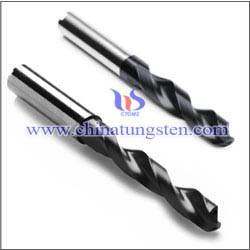
(The end. This article is divided into several parts. Here is part 5. For part 4, please refer to http://news.chinatungsten.com/en/tungsten-information/80549-ti-10419)
| Tungsten Carbide Supplier: Chinatungsten Online tungsten-carbide.com.cn | Tel.: 86 592 5129696; Fax: 86 592 5129797;Email:sales@chinatungsten.com |
| Tungsten News&Tungsten Prices, 3G Version: http://3g.chinatungsten.com | Molybdenum News & Molybdenum Price: http://news.molybdenum.com.cn |
Geometric Characteristics of Tungsten Carbide Drill Bit Ⅳ
- Details
- Category: Tungsten Information
- Published on Thursday, 19 November 2015 15:57
In last part we know that the lip angle of a tungsten carbide drill bit changes with the point angle and determines cutting speed, and the drill bits have various lengths according to their purposes. This part will go on discussing the geometric characteristics of tungsten carbide drill bits.
5. The shank: different shapes of shank are used for tungsten carbide drill bits. Some are simply the most appropriate for the chuck used; in other cases particular combinations of shank and chuck give performance advantages, such as allowing higher torque, greater centering accuracy, or efficient hammering action. Most drill bits for consumer use have straight shanks. For heavy duty drilling in industry, bits with tapered shanks are sometimes used.
6. The diameter-to-length ratio of the tungsten carbide drill bit is usually between 1:1 and 1:10. Much higher ratios are possible (e.g., "aircraft-length" twist bits, pressured-oil gun dril bits, etc.), but the higher the ratio, the greater the technical challenge of producing good work.
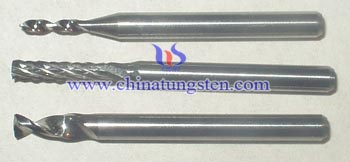
(To be continued. This article is divided into several parts. Here is part 4. For part 3, please refer to http://news.chinatungsten.com/en/tungsten-information/80548-ti-10418; for part 5, please refer to http://news.chinatungsten.com/en/tungsten-information/80550-ti-10420)
| Tungsten Carbide Supplier: Chinatungsten Online tungsten-carbide.com.cn | Tel.: 86 592 5129696; Fax: 86 592 5129797;Email:sales@chinatungsten.com |
| Tungsten News&Tungsten Prices, 3G Version: http://3g.chinatungsten.com | Molybdenum News & Molybdenum Price: http://news.molybdenum.com.cn |
Geometric Characteristics of Tungsten Carbide Drill Bit Ⅲ
- Details
- Category: Tungsten Information
- Published on Thursday, 19 November 2015 15:55
In last part we know that the twist rate of a tungsten carbide drill bit affects removal speed of chips, and the correct point angle varies with working material hardness. This part will go on discussing the geometric characteristics of tungsten carbide drill bits.
3. The lip angle: it determines the amount of support provided to the cutting edge. A greater lip angle will cause the tungsten carbide drill bit to cut more aggressively under the same amount of point pressure as a bit with a smaller lip angle. Both conditions can cause binding, wear, and eventual catastrophic failure of the tool. The proper amount of lip clearance is determined by the point angle. A very acute point angle has more web surface area presented to the work at any one time, requiring an aggressive lip angle, where a flat bit is extremely sensitive to small changes in lip angle due to the small surface area supporting the cutting edges.
4. The length of a bit: it determines how long a hole can be drilled, and also determines the stiffness of the tungsten carbide drill bit and accuracy of the resultant hole. Twist drill bits are available in standard lengths, referred to as stub-length or screw-machine-length (short), the extremely common jobber-length (medium), and taper-length or long-series (long).
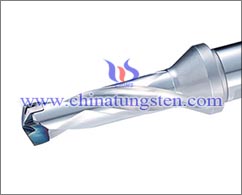
(To be continued. This article is divided into several parts. Here is part 3. For part 2, please refer to http://news.chinatungsten.com/en/tungsten-information/80547-ti-10417; for part 4, please refer to http://news.chinatungsten.com/en/tungsten-information/80549-ti-10419)
| Tungsten Carbide Supplier: Chinatungsten Online tungsten-carbide.com.cn | Tel.: 86 592 5129696; Fax: 86 592 5129797;Email:sales@chinatungsten.com |
| Tungsten News&Tungsten Prices, 3G Version: http://3g.chinatungsten.com | Molybdenum News & Molybdenum Price: http://news.molybdenum.com.cn |
Geometric Characteristics of Tungsten Carbide Drill BitⅡ
- Details
- Category: Tungsten Information
- Published on Thursday, 19 November 2015 15:52
In last part we know that tungsten carbide drill bits are composed of tungsten carbide tips and shanks, either brazed or solid, used for cutting holes. This part will discuss the geometric characteristics of tungsten carbide drill bits.
Drill bit geometry has several characteristics:
1. The spiral (or rate of twist): the spiral in the tungsten carbide drill bit controls the rate of chip removal. A fast spiral (high twist rate or "compact flute") drill bit is used in high feed rate applications under low spindle speeds, where removal of a large volume of swarf is required. Low spiral (low twist rate or "elongated flute") drill bits are used in cutting applications where high cutting speeds are traditionally used, and where the material has a tendency to gall on the bit or otherwise clog the hole, such as aluminum or copper.
2. The point angle, or the angle formed at the tip of the bit: it is determined by the material the bit will be operating in. Harder materials require a larger point angle, and softer materials require a sharper angle. The correct point angle for the hardness of the material controls wandering, chatter, hole shape, wear rate, and other characteristics.
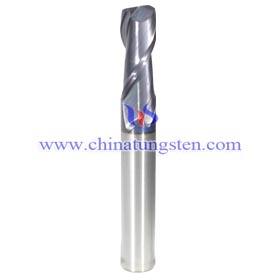
(To be continued. This article is divided into several parts. Here is part 2. For part 1, please refer to http://news.chinatungsten.com/en/tungsten-information/80546-ti-10416; for part 3, please refer to http://news.chinatungsten.com/en/tungsten-information/80548-ti-10418)
| Tungsten Carbide Supplier: Chinatungsten Online tungsten-carbide.com.cn | Tel.: 86 592 5129696; Fax: 86 592 5129797;Email:sales@chinatungsten.com |
| Tungsten News&Tungsten Prices, 3G Version: http://3g.chinatungsten.com | Molybdenum News & Molybdenum Price: http://news.molybdenum.com.cn |
Geometric Characteristics of Tungsten Carbide Drill BitⅠ
- Details
- Category: Tungsten Information
- Published on Thursday, 19 November 2015 15:48
Drill bits are usually connected to a mechanism, often simply referred to as a drill, which rotates them and provides torque and axial force to create the hole.
Tungsten carbide drill bits are cutting tools used to create cylindrical holes, almost always of circular cross-section. Exceptionally, specially shaped bits can cut holes of non-circular cross-section. Tungsten carbide drill bit can drill virtually all materials while holding an edge longer than other bits. The carbide material is expensive and much more brittle than steels; consequently they are mainly used for drill bit tips, small pieces of hard material fixed or brazed onto the tip of a bit made of less hard metal. However, it is becoming common in job shops to use solid carbide bits. In very small sizes it is difficult to fit carbide tips; in some industries, most notably PCB manufacturing, requiring many holes with diameters less than 1 mm, solid carbide bits are used.
Tungsten carbide drill bits come in many sizes and have many uses. The shank is the part of the drill bit grasped by the chuck of a drill. The cutting edges of the drill bit are at one end, and the shank is at the other.

(To be continued. This article is divided into several parts. Here is part 1. For part 2, please refer to http://news.chinatungsten.com/en/tungsten-information/80547-ti-10417)
| Tungsten Carbide Supplier: Chinatungsten Online tungsten-carbide.com.cn | Tel.: 86 592 5129696; Fax: 86 592 5129797;Email:sales@chinatungsten.com |
| Tungsten News&Tungsten Prices, 3G Version: http://3g.chinatungsten.com | Molybdenum News & Molybdenum Price: http://news.molybdenum.com.cn |
Crystallisation and Processing of Ammonium Paratungstate (APT)
- Details
- Category: Tungsten Information
- Published on Thursday, 19 November 2015 15:47
Crystallisation and processing of ammonium paratungstate (APT)
Ammonium paratungstate (or APT) is a white crystalline salt of ammonium and tungsten, with the chemical formula (NH4)10(H2W12O42)·4H2O.
Ammonium paratungstate is produced by separating tungsten from its ore. Once the ammonium paratungstate is prepared, it is heated to its decomposition temperature, 600 °C. Left over is WO3, tungsten(VI) oxide. From there, the oxide is heated in an atmosphere of hydrogen, reducing the tungsten to elemental powder, leaving behind water vapor. From there, the tungsten powder can be fused into any number of things, from wire to bars to other shapes.
This paper starts with the chemistry of tungsten in aqueous solutions. Various aspects of the crystallisation of the hydrates of ammonium paratungstate (APT) will be discussed in addition. This is then followed by the chemistry of the first pyrometallurgical treatment in non-sag (NS) tungsten manufacturing, the processing of APT into tungsten blue oxide. The section is mainly devoted to the chemistry of the thermal decomposition of APT in various atmospheres. Finally, parameters controlling tungsten blue oxide quality will be discussed.
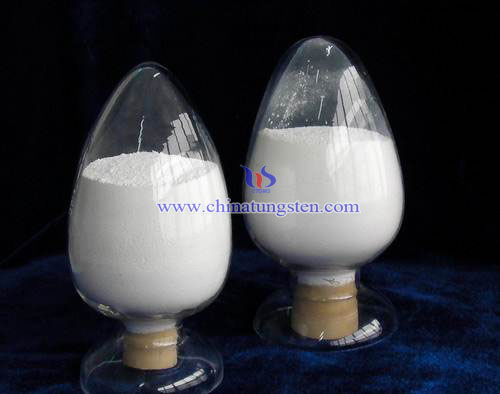
| Tungsten Supplier: Chinatungsten Online www.chinatungsten.com | Tel.: 86 592 5129696; Fax: 86 592 5129797;Email:sales@chinatungsten.com |
| Tungsten News & Prices, 3G Version: http://3g.chinatungsten.com | Molybdenum News & Molybdenum Price: http://news.molybdenum.com.cn |
Plasma Synthesis of Tungsten Carbide Nanopowder from Ammonium Paratungstate
- Details
- Category: Tungsten Information
- Published on Thursday, 19 November 2015 15:34
Ammonium paratungstate (or APT) is a white crystalline salt of ammonium and tungsten, with the chemical formula (NH4)10(H2W12O42)·4H2O.
Ammonium paratungstate is produced by separating tungsten from its ore. Once the ammonium paratungstate is prepared, it is heated to its decomposition temperature, 600 °C. Left over is WO3, tungsten(VI) oxide. From there, the oxide is heated in an atmosphere of hydrogen, reducing the tungsten to elemental powder, leaving behind water vapor. From there, the tungsten powder can be fused into any number of things, from wire to bars to other shapes.
A thermal plasma process has been applied to the synthesis of nanosized tungsten carbide powder with ammonium paratungstate (APT) as the precursor. The reduction and carburization of vaporized APT produced nanosized tungsten carbide (WC1−x) powder, which sometimes contained a small amount of W2C phase. The effects of reactant gas composition, plasma torch power, the flow rate of plasma gas, and the addition of secondary plasma gas (H2) on the product composition and particle size were investigated. The produced tungsten carbide (WC1−x) powder was <20 nm in particle size. The synthesized powders were also subjected to a hydrogen heat treatment to fully carburize the WC1−x and W2C phases to the WC phase as well as to remove excess carbon. Finally, WC powder of particle size <100 nm was obtained.

| Tungsten Supplier: Chinatungsten Online www.chinatungsten.com | Tel.: 86 592 5129696; Fax: 86 592 5129797;Email:sales@chinatungsten.com |
| Tungsten News & Prices, 3G Version: http://3g.chinatungsten.com | Molybdenum News & Molybdenum Price: http://news.molybdenum.com.cn |
Characterization of Various Commercial Forms of Ammonium Paratungstate Powder
- Details
- Category: Tungsten Information
- Published on Thursday, 19 November 2015 15:26
Characterization of various commercial forms of ammonium paratungstate powder
Ammonium paratungstate (or APT) is a white crystalline salt of ammonium and tungsten, with the chemical formula (NH4)10(H2W12O42)·4H2O.
Ammonium paratungstate is produced by separating tungsten from its ore. Once the ammonium paratungstate is prepared, it is heated to its decomposition temperature, 600 °C. Left over is WO3, tungsten(VI) oxide. From there, the oxide is heated in an atmosphere of hydrogen, reducing the tungsten to elemental powder, leaving behind water vapor. From there, the tungsten powder can be fused into any number of things, from wire to bars to other shapes.
The structures and morphologies of various commercial forms of ammonium paratungstate have been studied and related to the processes used for the production of this material. High temperature crystallization processes are shown to produce the monoclinic pentahydrate 5(NH4)2O.12WO3.5H2O which yields a cuboid or equiaxed monoclinic powder morphology. Crystallization at room temperature produces the orthorhombic undecahydrate 5(NH4)20.12WO3.11H2O which has a lath-like particle morphology. Freeze-dried ammonium paratungstate is shown to be amorphous in nature, to have a chemical composition approaching that of the undecahydrate, and to have a porous, multiparticulate agglomerate particle morphology. The apparent densities of the samples of ammonium paratungstate are explained in terms of the particle morphologies.

| Tungsten Supplier: Chinatungsten Online www.chinatungsten.com | Tel.: 86 592 5129696; Fax: 86 592 5129797;Email:sales@chinatungsten.com |
| Tungsten News & Prices, 3G Version: http://3g.chinatungsten.com | Molybdenum News & Molybdenum Price: http://news.molybdenum.com.cn |
The Thermal Decomposition of Ammonium Paratungstate
- Details
- Category: Tungsten Information
- Published on Wednesday, 18 November 2015 18:08
| Tungsten Supplier: Chinatungsten Online www.chinatungsten.com | Tel.: 86 592 5129696; Fax: 86 592 5129797;Email:sales@chinatungsten.com |
| Tungsten News & Prices, 3G Version: http://3g.chinatungsten.com | Molybdenum News & Molybdenum Price: http://news.molybdenum.com.cn |



 sales@chinatungsten.com
sales@chinatungsten.com